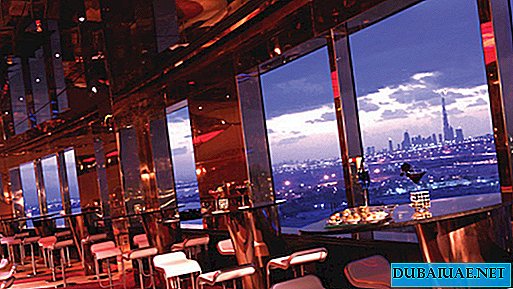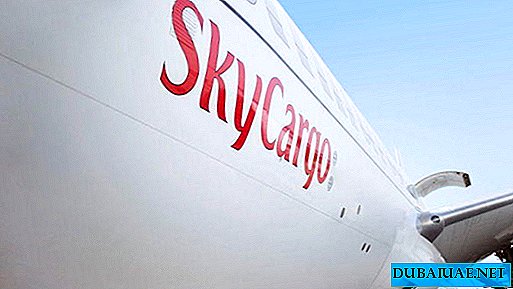OUR PLANE IS REDUCING OVER THE GENEVA LAKE (OR THE LEMAN LAKE), THE BIGGEST IN THE ALPS. UNDER THE WING - A ROTATION OF GREEN ON THE MOUNTAINS THROUGH WATER TURNS, WHAT IS COMPLETELY UNUSUAL TO THE VIEW OF A PERSON LIVING IN THE MIDDLE EAST, AND IN PARTICULAR ONE WHO IS FLYING IN SEWN. "WE" IS A SMALL GROUP OF JOURNALISTS FROM THE UNITED ARAB EMIRATES, WHICH HAPPENED TO RECEIVE AN INVITATION TO THE HOURS FACTORY OF THE SWISS COMPANY PARMIGIANI FLEURIELSULUSEPULA WORD TO SAY, THIS HOUR MANUFACTURE IS NOT TOO FREQUENT TO OPEN ITS DOORS TO PRESS REPRESENTATIVES.
All this jazz!
Feeling cool freshness at the exit of the airport building and mentally greeting the clouds in the sky (the people of Dubai will understand me), I thought that the tour promises to be pleasant. We are going to Montreux, a city in the canton of Vaud, our first destination, eagerly "eating" the landscapes with our eyes. A couple of times I even managed to catch a glimpse of the top of Mont Blanc disguised among the clouds. From time to time we stopped to take photos. As one of the journalists noted: "There are probably non-photogenic places in Switzerland, but I have not met them yet."
Closer to Montreux, the slopes of the Alps are densely strewn with vineyards. As it turned out, winemaking is quite well developed, but few people know about it outside the country, since most of the wine produced (by the way, very good) is consumed in Switzerland itself. Moody grapes grow only on the eastern side of the mountain slope - on the western side there is not enough daylight. All vineyards are strictly protected by the state - their owners do not have the right to cut down plantings and build, in their place, for example, a house.
We checked into a hotel and spent the rest of the day exploring the surroundings, tormenting ourselves with plenty of questions from our guide-driver. Montreux is the venue of the famous international jazz festival, which attracts the best musicians from around the world and which has been supported by Parmigiani for many years. This, by the way, is the merit of Jean-Marc Jacot, officially - the managing director of the company. He is so energetic that he seems to be able to infect everyone around him with his energy. To attend a jazz concert in Montreux is the dream of many fans of jazz music. We were lucky - we visited there. But back to the clock.
Fleurier. In the realm of complex hours
 The next morning we went to Fleurier - the town of Neuchatel canton with a population of just over 3,500 people, where, at some distance from the famous watch valley, the Parmigiani Fleurier company headquarters and production facilities are located. In Fleuriers are the offices and factories of two other well-known watch companies - Chopard and Bovet.
The next morning we went to Fleurier - the town of Neuchatel canton with a population of just over 3,500 people, where, at some distance from the famous watch valley, the Parmigiani Fleurier company headquarters and production facilities are located. In Fleuriers are the offices and factories of two other well-known watch companies - Chopard and Bovet.
Together with them, Parmigiani Fleurier and its subsidiary Vaucher Manufacture Fleurier founded the Fleurier Quality Foundation, an organization that, having developed its own standards, certifies the quality of watches produced. From the 960-meter height, on which the Chapeau de Napoleon restaurant is located - the whole Fleurie is clearly visible!
We began our acquaintance with the factory from the restoration department. And this is no coincidence. Michelle Parmigiani, a Swiss-born Italian-born company, who started the company, began his creative career precisely with the repair of modern and restoration of antique watches and complex watch movements. Michelle was born in 1950 in the Swiss city of Cuva. He has the typical fate of a watchmaker. As a child, he acquired the first knowledge and skills in watchmaking.
In 1975, Michel Parmigiani created his own company Parmigiani Mesure et Art du Temps S. A. (PMAT). The company Parmigiani specialized in the restoration of ancient watch rarities and once received a contract for the restoration of the famous "Pendule Sympathique" watches, created by Abraham-Louis Breguet himself. Michelle took up the work that none of his colleagues decided to do. In 1991, the famous watch was restored and returned to the Louvre, and Michel Parmigiani became known throughout the watch world.
Currently, the production structure of the Parmigiani watch concern is as follows: AtoKalpa S. A. (Alle) - produces individual parts of watch movements; Bruno Affolter S. A. (La Chaux-de-Fonds) - produces cases and dials; Elwin S. A. (Moutiers) - manufactures screws and other fasteners. Finally, the assembly, adjustment and control of assembled clockworks is carried out at the headquarters of Vaucher Parmigiani Fleurier S. A. in the city of Fleurier. In addition, the company develops and creates its own production equipment. The entire Parmigiani business is divided into three areas: restoration, development and production of our own models, design of new mechanisms (at the independent Vaucher Manufacture factory).
The restoration of mechanisms is now one of the most important areas of the company’s activities, and Michel Parmigiani is the official restorer of the Sandoz Foundation museum. Museums and watch companies turn to Parmigiani when the highest level of professionalism is required, because many of the items you have to work with are often priceless. During the existence of the department, its employees "brought life back" to many works of watch and jewelry art. Among them, for example, are two eggs from Carl Faberge workshops with complex mechanisms inside - the Yusupov Egg and the Peacock egg, now owned by the Sandoz Foundation.
I must say that the restoration of the mechanical masterpieces of the past is an incredibly long and painstaking process. For example, the restoration of the "Pistol with a Bird" mechanism, owned by the Patek Philipp museum, took about 500 hours of pure working time from the Parmigiani masters.
We were surprised to note that for work requiring unlimited accuracy and perseverance, most of the employees in this department are too young; however, after listening to their stories, they realized the secret: they are all passionately passionate about their work.
The manager of the restoration department, Flavien Gigande (aka our factory guide), says that there are practically no random people in this business: "Very often, love for watch movements is passed down from generation to generation, and many young people whose parents or grandfathers were watchmakers, the choice of profession is predetermined. " By the way, it happens that newcomers who come to get a job in a factory have nothing but this love behind them. Even special education. And, despite the fact that there are watchmaker schools in Switzerland, some things can be learned only in the production process.
The art of creation
We move on to the inspection of other departments where components are created and the assembly of modern complex Parmigiani mechanical watches takes place.
As the story tells us by Flavien, in the early 1990s, the Sandoz family found out about the talented master Michel Parmigiani and suggested that Michel create a watch under his own brand. This is a unique case in recent history, when the name of a famous watch brand belongs to a living and working talented watchmaker.
Typically, a brand gets its name after the death of its creator. Well, this fact once again confirms the genius of Michel Parmigiani, who, in addition to unique developments for the Bugatti company, unique tourbillons and chronographs, also created a clock that counts the time on the eastern lunar calendar of Hijra.
 It should be noted that Sandoz is one of the richest surnames in Switzerland, which owns the country's largest fund, the Sandoz Family Foundation, established in 1964. The fund is engaged in investments in areas such as jewelry manufacturing and high-precision technology, and also supports young talents in these fields of activity Thanks to the Sandoz family, Michel Parmigiani’s company was equipped with the most modern equipment and acquired production autonomy.
It should be noted that Sandoz is one of the richest surnames in Switzerland, which owns the country's largest fund, the Sandoz Family Foundation, established in 1964. The fund is engaged in investments in areas such as jewelry manufacturing and high-precision technology, and also supports young talents in these fields of activity Thanks to the Sandoz family, Michel Parmigiani’s company was equipped with the most modern equipment and acquired production autonomy.
In 1995, Michel Parmigiani strengthened his position in the watch industry thanks to the FLeur d'Orient model, which became the model of modern table clocks. In 1996, the Sandoz Family Foundation bought a 51% stake in Parmigiani Mesure et Art du Temps S. A., and Michel Parmigiani became president and chief watchmaker of the company. Some time later, partners acquired three enterprises, and Parmigiani was transformed into a manufacturing association, completely independent of external suppliers.
Today, Parmigiani Fleurier is a real watch manufacture. According to the tenets of chorology (the science of mechanisms that measure time), in order to carry this proud title, a watch company must independently produce, if not all, then most of the components necessary for assembling watches.
Parmigiani Fleurier independently produces absolutely everything, from mechanisms to cases, with the exception, perhaps, of just one detail: high-quality leather straps are commissioned by Parmigiani to be manufactured and supplied by the French Hermes House. Nowadays, only a few watch companies boast such a complete production cycle.
Dairy rivers, cheese shores
 To visit Switzerland and not take with you a ton of the best chocolate and cheese in the world? You are joking! We bought a wide variety of cheese in one of the many villages we met on the way from Neuchâtel to Geneva in a small private cheese factory. So she looks!
To visit Switzerland and not take with you a ton of the best chocolate and cheese in the world? You are joking! We bought a wide variety of cheese in one of the many villages we met on the way from Neuchâtel to Geneva in a small private cheese factory. So she looks!
And, finally, I managed to see what I was looking for from the moment of landing in this amazing country - a landscape from commercials of chocolate, familiar from childhood - well-fed, contented cows in a green meadow.
On each neck (the advertisement did not deceive) - a bell, or I would even say a bell. By the way, they masterfully climb the mountains and descend from them. “This is thanks to the special arrangement of the legs,” our guide jokes. Here they are - Swiss burenki! That's all. Goodbye, Switzerland. Until the new holidays.
The author thanks Parmigiani Fleurier for an amazing trip.










